5 reasons spreadsheets may be holding back your product team – and a better alternative

Spreadsheets vs Product Management Systems
“Spreadsheets are free, if you don’t value your time”
For years, product teams have relied on spreadsheets to capture user feedback and feature ideas. Their sheer flexibility allows you to capture large quantities of information and sort and filter it in many different ways.
But sheer flexibility only gets you so far when it comes to powering the complex and collaborative processes involved in product management — or for that matter, in engineering, sales, or customer success. Yet in 2020, we’d never dream of using spreadsheets to replace a CRM like Salesforce or an issue tracker like Jira. Still, some product teams continue to use spreadsheets, not yet aware of the benefits of a dedicated product management system.
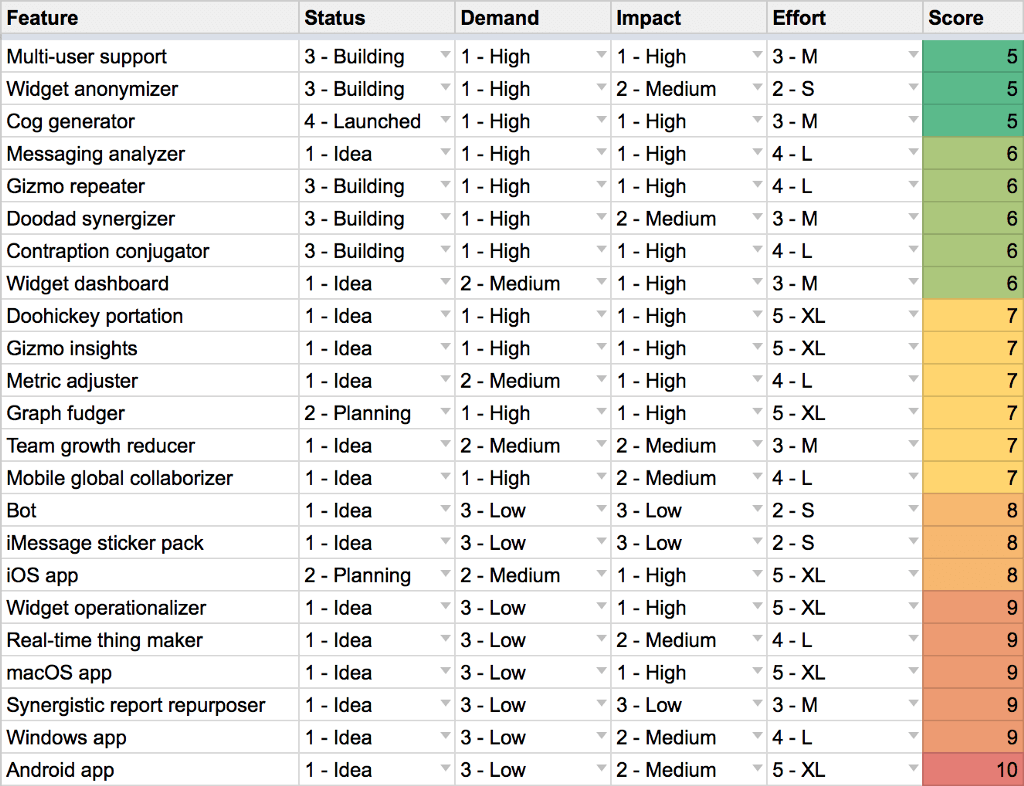
We’ve seen firsthand how moving from spreadsheets to a dedicated product management system like Productboard can help product organizations make better decisions, backed by real customer insights and data. It’s not just about saving your valuable time day-to-day!
Dedicated systems can help save the precious time of your entire delivery team by ensuring they’re not working for weeks or months on the wrong features. They allow product and delivery teams to stay more closely aligned, and can help multiple product teams collaborate more effectively. For example, Productboard provides Knotch’s engineers with actual customer feedback on features to understand the entire roadmap and how their work supports it.
They can even provide transparency to the entire company, helping you as a product leader open up the black box of product management to share with everyone where the product is headed next, and why.
Limitations of Spreadsheets for Product Teams
Below we’ll explore how while reviewing five challenges product teams face when capturing feedback, prioritizing feature ideas, and roadmapping in spreadsheets.
1. Spreadsheets are generic
Spreadsheets offer all the flexibility but none of the structure, best practices, or product management-specific workflows provided by a dedicated product management system. Using a spreadsheet, you need to define your prioritization process from scratch, create norms around what prioritization criteria to use, and how to score features.
With a dedicated product management system, out-of-the-box capabilities help you capture the right types of data for evaluating each feature idea. You can use predefined scales to evaluate features by a variety of strategic criteria.
There are still many customization options for your team's needs. With Productboard, Delivery Hero replaced generic spreadsheets with a standardized prioritization process against unique OKRs, effort, the number of times a feature was requested, and more. You can even customize how prioritization scores are calculated by deciding the relative input of several criteria out of 100%.
But this is just the tip of the iceberg. There are many more complex processes that high-functioning product teams rely on every day.
Here's another example. As product insights stream in from colleagues and customers, you need to triage it and route it to the right product manager for review to categorize it based on user need, feature idea, product area, or topic. Monitoring a single stream of feedback helps Arnita Hayden, Director of Product at Sprout Social, keep a pulse on user needs and peace of mind knowing no critical feedback falls through the cracks. These multistep, collaborative, product management-specific workflows are impossible to replicate in a spreadsheet, just like common sales workflows tracked in a CRM.
With a dedicated product management system, all these specialized workflows are enabled as soon as you adopt the solution. Few product teams ever look back.
2. Spreadsheets are limited
While spreadsheets offer some flexibility for structuring information, they fall short in even basic ways when product managers need to effectively visualize or interact with their data.
For example, when capturing a piece of user feedback or a feature idea, one of the most basic things you might want to do is to include a few supporting graphics — screenshots, sketches, whiteboard photos, or mockups. This is easy to do in a product management system, but there is no adequate way to capture these sorts of supporting graphics in a spreadsheet.
And have you ever tried inputting more substantial information in the cells of a spreadsheet — like some user research or a brief feature specification? The lack of basic formatting options within a cell and the spreadsheet's layout make legibility a nightmare. It means this information needs to be captured elsewhere and linked to indirectly, increasing the number of systems where critical product information is captured. Wouldn't it be better if that information was all in one place and immediately on hand?
Product management systems are built to allow you to drill into information like pieces of user research, user feedback, or feature ideas and add a variety of rich supporting data and media. That context will always be a click away for anyone on your team. You can even make it accessible to stakeholders you share your roadmap with. As Fastly’s Senior Product Manager says, “Productboard is as simple as a spreadsheet, but better. It’s also advanced enough with the right balance of structure and flexibility.”
In addition to a range of capabilities that make your most critical product data more valuable and legible, product management systems also enable more advanced ways of interacting with data. For example, when you're capturing feature ideas, you may want to break them down into sub-ideas and easily reorganize them or move them between features.
Other times, you want to cluster several smaller ideas beneath a more high-level idea. This type of hierarchical structure would be unwieldy to manage in a spreadsheet, but product management systems like Productboard provide a flexible product hierarchy for organizing your feature ideas.
These are a few common ways that spreadsheets fall short in handling even basic product management use cases, but there are so many more — from ideation to planning, prioritization, and roadmapping. Plus, spreadsheets miss the mark for companies like Fastly, as they aren’t connected to everything you need as a PM, like insights into features.
For handling basic daily product management use cases, a dedicated system leaves spreadsheets in the dust.
3. Spreadsheets are inaccessible
Even with the rise of Google Sheets, spreadsheets tend to be closed environments. On the rare occasion product colleagues know where to look for your prioritization data, what's the chance they'll be able to make sense of it? What about version control and manual updates? Talk about missed opportunities.
Also, the approachable data and visualizations in a product management system help others appreciate your prioritization methodology. You still have full control over who has access to this information, thanks to customizable sharing settings that you can update on individual views of your data. Even though these views are customized, they'll always stay up to date because they're based on a common set of product data. So stakeholders will always know they're seeing the latest and greatest, and you don't have to worry about maintaining multiple views of the same data.
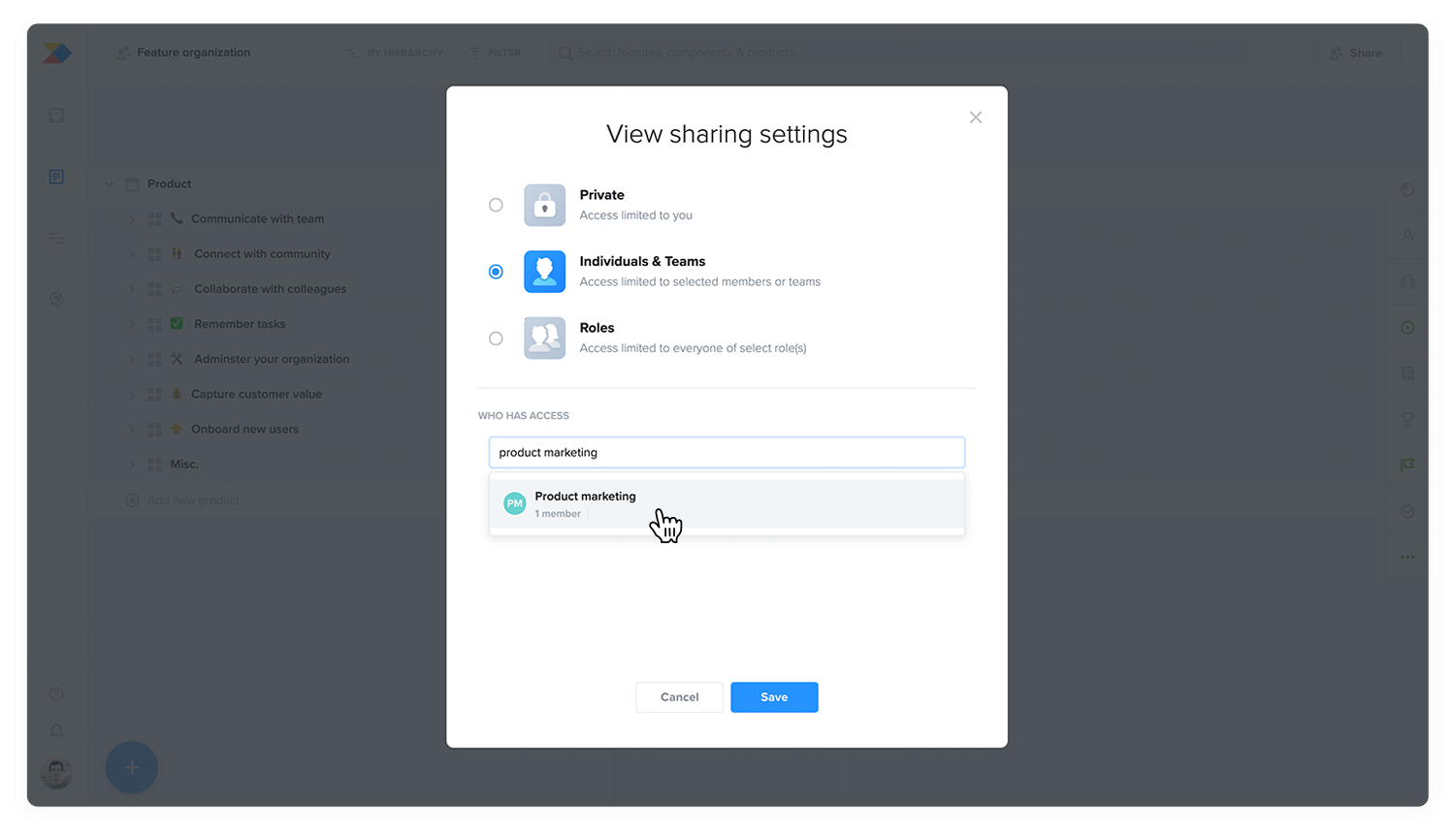
Product leaders, in particular, will appreciate the idea of having more insight into each product manager’s prioritization process. It allows them to ensure that product managers are using prioritization criteria that align with product objectives and company goals.
Even those product managers who have been content with a siloed spreadsheet will likely see the benefit of providing more visibility to their peers. It helps them share their priorities with executives to secure more resources. It allows them to share progress with peers and surface dependencies. And it helps them rationalize their decision-making with colleagues across the organization by sharing supporting data.
4. Spreadsheets are siloed
Another challenge of the siloed nature of spreadsheets is the difficulty of integrating them with third-party systems, which can be valuable for automatically inputting new feature requests or feature ideas.
If you use Google Sheets, you have the option of inputting information via Google forms, or else automating data input with tools like IFTTT, Tray.io, or Zapier, but you have to build these workflows yourself, and even then the types of information you can transfer is limited. For example, what if you want to push prioritized feature ideas from your spreadsheet into Jira, GitHub, Trello, or Azure DevOps and sync the name, details, and status between both systems? Or automatically import all new issues created in Jira that match certain JQL as new feature ideas in your prioritization spreadsheet. That's not so easy.
Using spreadsheets, Cloudinary manually created Jira tickets to log customer feedback. Yet, since Jira is not built for product managers, but rather for execution, it was almost impossible for product leaders to clearly and completely understand the work of the product management organization.
By contrast, product management systems like Productboard come with native integrations with popular delivery planning solutions like Jira, Azure DevOps, GitHub, Trello, and Pivotal Tracker. It helps you push features straight into delivery and, in many cases, keep key data synced between both systems — even track delivery status from one place in Productboard.
Developers at companies like Vidyard still work in Jira, but product teams use Productboard, a tool built for their needs, to effectively prioritize and provide feature context. It provides a seamless end-to-end workflow that links customer feedback from GTM teams to discovery and delivery with the Jira integration. That way you remove miscommunication between teams so that no one says “that’s news to me” or “that’s a surprise.”
Native integrations are also available for automatically consolidating incoming product ideas, requests, and feedback. Push requests to your product management system from Slack, Intercom, Zendesk, Typeform, email and a host of other tools. Make it as seamless as possible for sales reps, support agents, and customer success specialists to push valuable insights to your product team and show them it's really being acted on. And save yourself the constant interruptions of colleagues raising feature requests with you ad hoc all day every day!
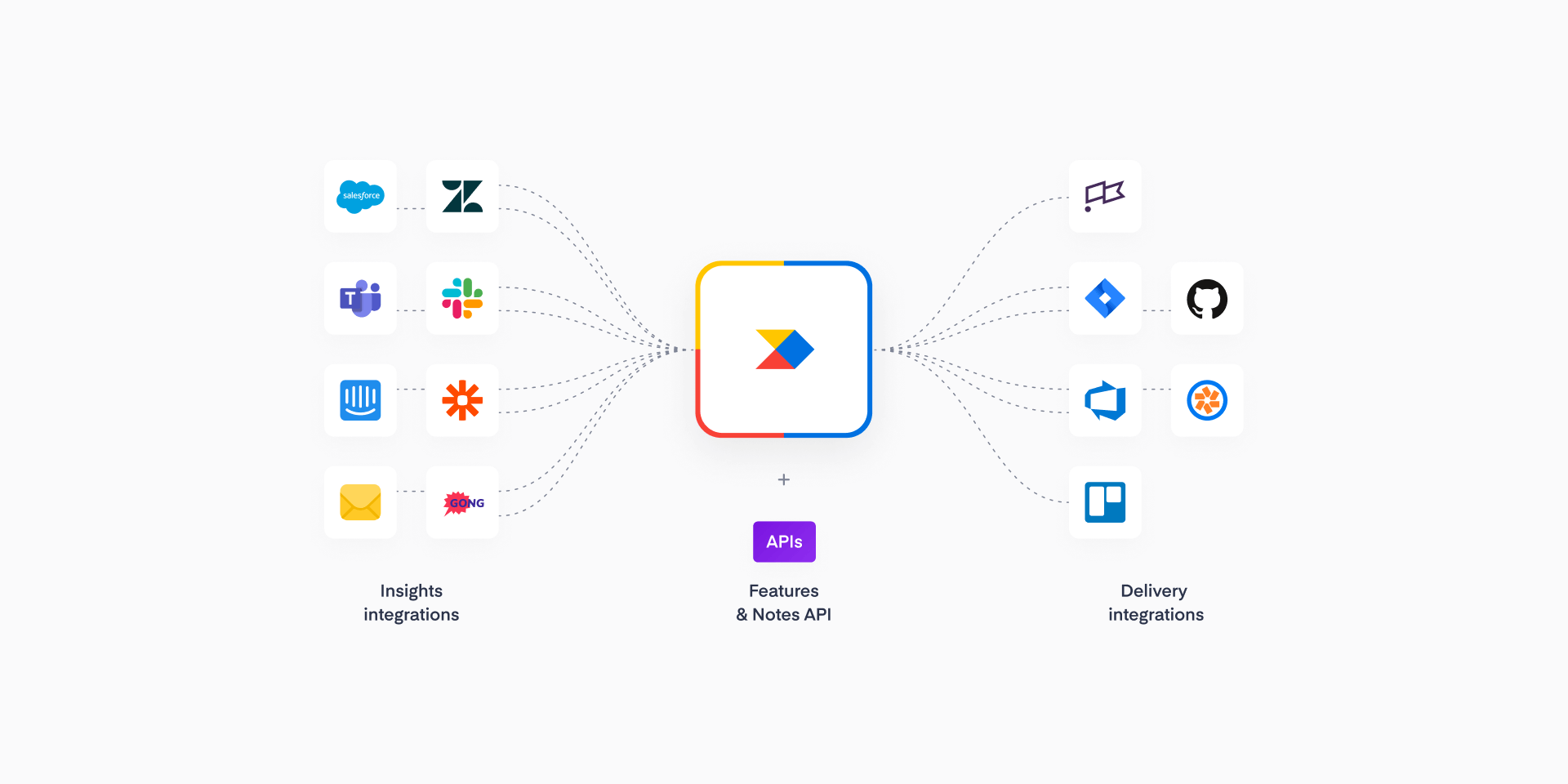
5. Spreadsheets aren't built for collaboration
Finally, spreadsheets aren't built for collaboration. Even in the best case where product teams use a SaaS spreadsheet like Google Sheets, communicating with colleagues by @mentioning them on individual cells is just not an effective or scalable way to discuss important customer feedback or feature ideas. In contrast, dedicated product management systems allow you to have full discussions on any piece of feedback, feature idea, product objective, business driver, prioritization score, customer, or most any other entity. Plus, stakeholders have full visibility into all prioritized features and a detailed description of why a feature is included or not included on the roadmap. Self-serve for the win!
Productboard also provides transparency into upcoming product initiatives, allowing for better stakeholder planning and alignment. Delivery Hero communicates its product planning and roadmap to stakeholders, helping teams set expectations, plan marketing and operations, and drive business from new features.
Colleagues can ask questions about objectives or features they find on your roadmap, and chime in with more related context. They can even submit related user feedback directly on features on your roadmap, and attribute it to the end user.
Product managers who take collaboration seriously can efficiently validate their ideas with colleagues across the organization using a Product Portal. They can post ideas they are considering and features that are planned, while colleagues can provide feedback or ideas of their own.
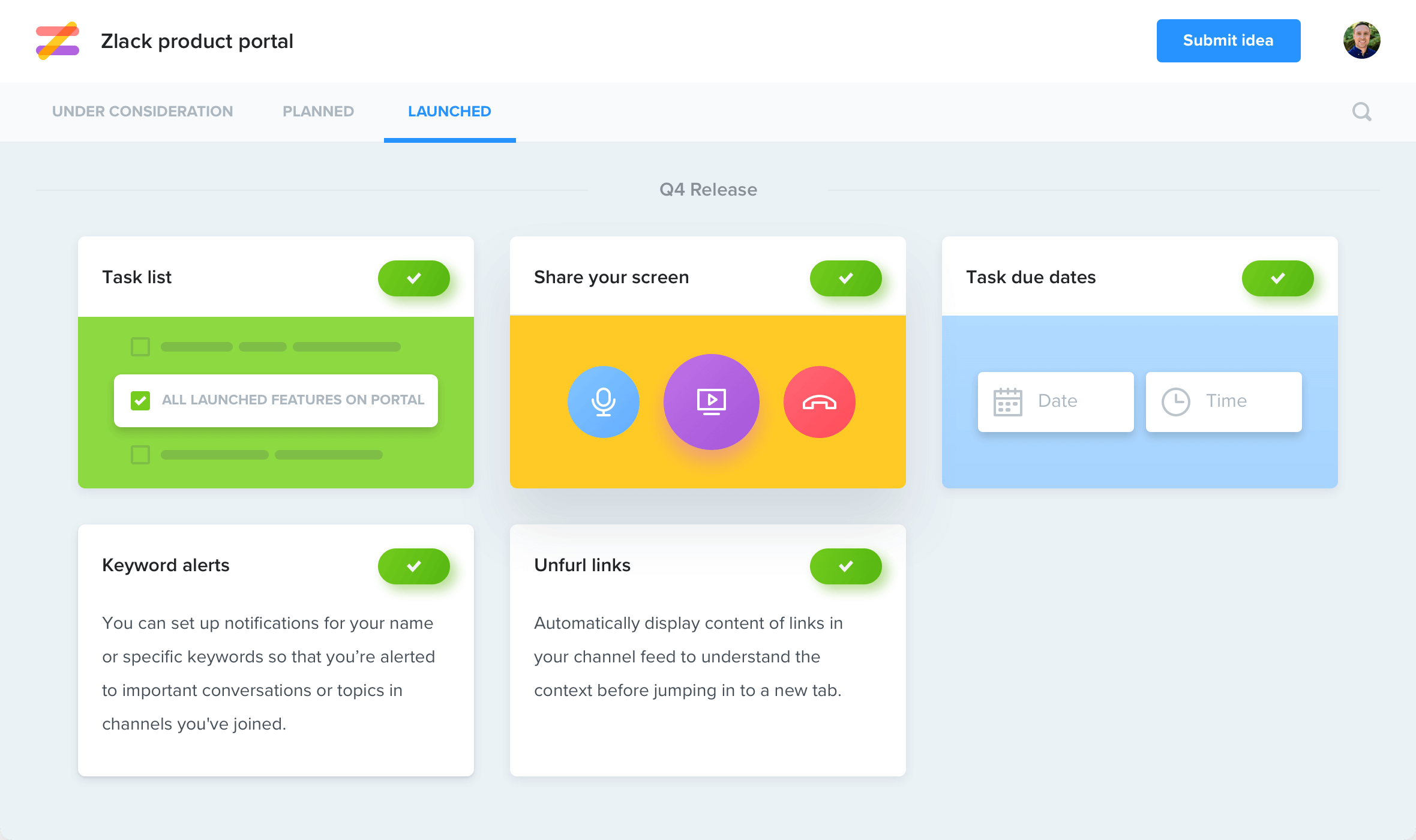
Colleagues can follow feedback or feature ideas they’re interested in. It means they can receive updates as feedback is acted on, and as features progress. Notifications help teammates on the design and delivery teams stay on top of features that relate to their work. And these collaborative features and workflows help colleagues on the frontlines communicate timely and accurate information to prospects and customers interested in the product team’s progress. When features go live, it’s easy for product managers to close the loop with all those who’ve followed the feature from infancy to delivery, and delight them with the news that it’s live.
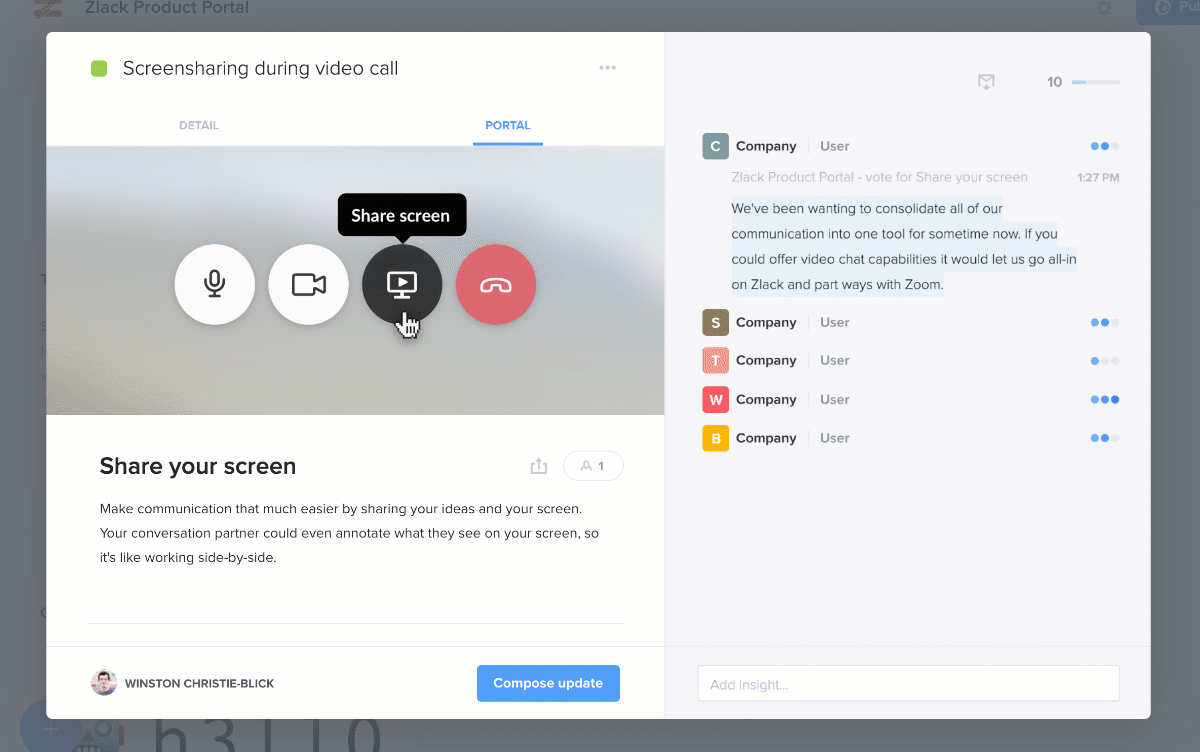
Why you should consider a dedicated product management system
“We tried different tools in the past. Nothing ever took or stuck. We had the typical spreadsheets — all the spreadsheets. We experimented with many options, including sending customer feedback through email to read and meetings where teams surfaced their priorities. All of our experiments came up short and felt very chaotic.”
As we’ve established, spreadsheets fall short in ways that impact product teams’ ability to prioritize the right features and efficiently bring them to market.
And while modern databases and information management tools like Airtable and Coda have offered incremental improvements in many of these areas, such as improved collaboration and day-to-day usability, they still lack the dedicated capabilities and best practices that come embedded within a product management system.
In contrast to spreadsheets and their modern equivalents, dedicated product management systems like Productboard provide the right balance of guidance and flexibility to align everyone on the right features to build next. Productboard is comprehensive, but flexible — to adapt to your team’s needs. It offers integrations for consolidating product feedback and syncing with delivery planning tools that improve existing workflows and ensures everything stays in sync.
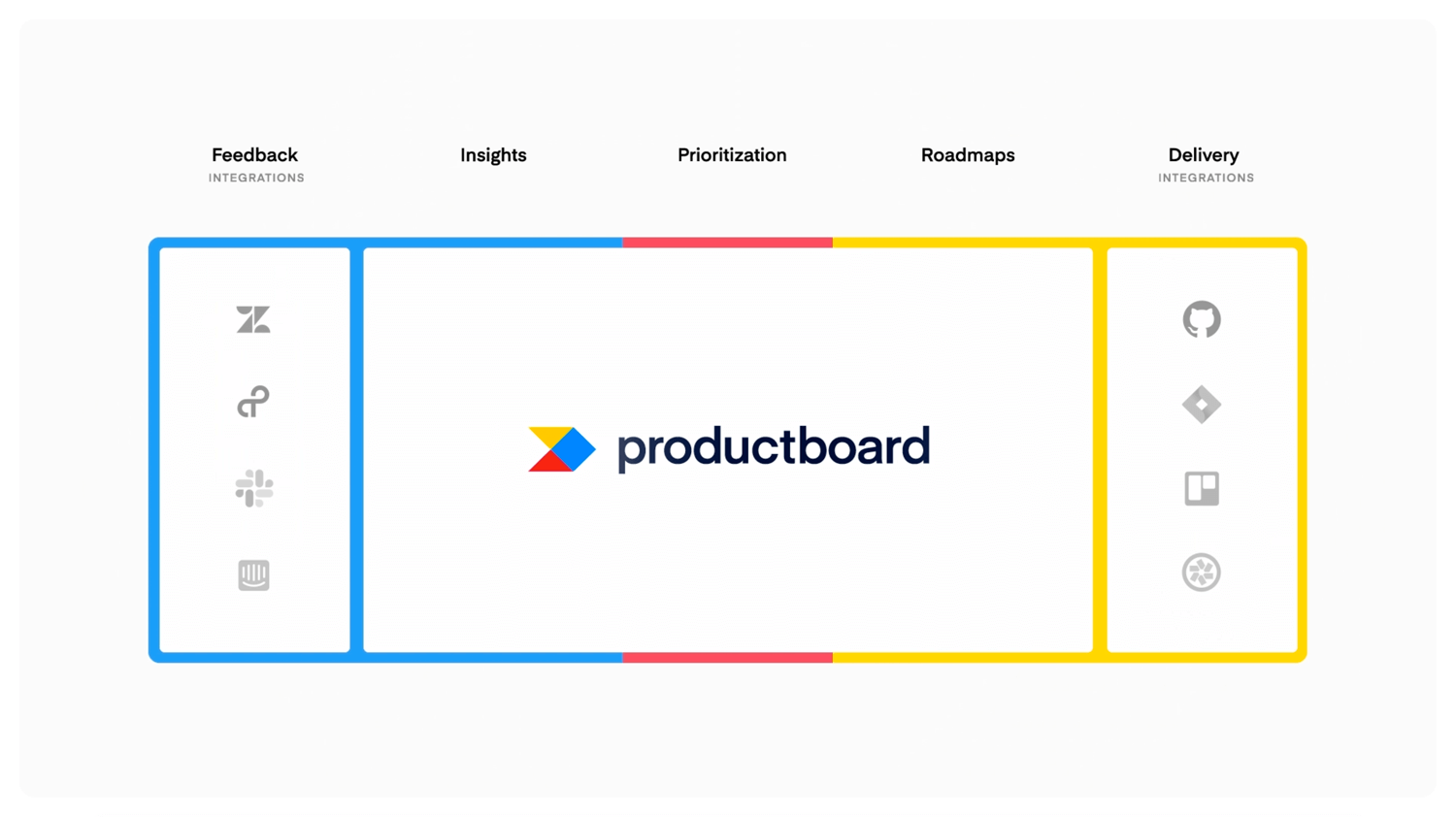
Above all, if you've spent years stretched between spreadsheets, Google docs, Evernote, wikis, Slack, email, and your development team's issue tracker, a system like Productboard will finally give you a home of your own — a single source of truth for product management.
Did I mention you can try it for free? Start your free Productboard trial today!





